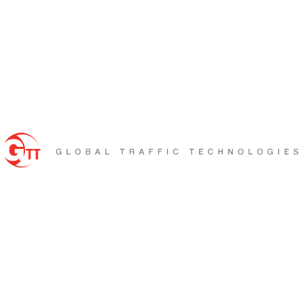Global Traffic Technologies, LLC. - Experts & Thought Leaders
Latest Global Traffic Technologies, LLC. news & announcements
The widespread adoption of vehicle to intersection technology – known as V2I – can help to solve a range of mobility issues in communities of all sizes, enabling cities to make the vital first moves towards delivering smarter transportation systems. That’s the message that Global Traffic Technologies (GTT) – the trusted market leader in priority control solutions – will be giving at a special session on Automated and Connected Vehicle Technologies during the American Public Transport Association TransITech conference in Jacksonville, Florida. During the session, Josh Lehman, GTT’s pre-sales engineer, will discuss the ways in which cities and communities can take advantage of connected technologies to make an immediate improvement in their public transit operations and on-time efficiency, leveraging connected devices, cloud-based computing and the potential to extract insightful analytics from the resulting data. GTT’s industry-leading Opticom™ Transit Signal Priority (TSP) solution allows transit vehicles to request a green light at intersections, dramatically reducing the potential for intersection crashes Improving travel times and reliability “Transit agencies and their partners can use data and technology to make smarter decisions about routes, timing and service levels,” Lehman said. “These improvements provide a better experience for riders and more efficient operations for the agencies. GTT’s industry-leading Opticom™ Transit Signal Priority (TSP) solution allows transit vehicles to request a green light at intersections, dramatically reducing the potential for intersection crashes and improving travel times and reliability. These intelligent priority management systems allow users to oversee and control the movement of vehicles that operate on a city's streets. With 50 years of priority control expertise under its belt, GTT is now pioneering innovative new approaches to the introduction of smart mobility solutions. Connected vehicle technologies Lehman’s presentation, during the Automated and Connected Vehicle (AV/CV) Technologies session from 2.45-4pm on Monday April 9, will explore three communities that worked to solve mobility issues by using connected vehicle technologies: New York City: Following a successful TSP pilot project on SBS-M15, NYC MTA has started deploying TSP on nearly 6,000 buses citywide. New York is leveraging existing infrastructure to create a centralised TSP solution. TSP is provided by a software application instead of typical purpose-driven hardware on the buses and at the intersections. Laval, Quebec: Laval recently implemented a number of preferential bus measures that aim to increase ridership. Advanced TSP is used to do more than just give a green light to buses – TSP in Laval takes into account passenger loads and lateness to determine what level of priority each bus should receive at each intersection. Bay Area, Calif.: Agencies in the Bay Area use advanced TSP applications to help manage schedules and maintain bus headway. The conditional priority measures help to ensure buses arrive at stops at posted times and help to avoid bus bunching. Data generated by the TSP system are used in analytics tools that drive performance and operational improvements. The 2018 TransITech Conference is focused on managing innovation in the best interests of public transportation operations and safety. The event attracts a wide range of public transportation information technology professionals, chief information officers, operations managers and staff, and software developers for transit agencies. TransITech is co-located with APTA’s Fare Collection/Revenue Management conference, at the Hyatt Regency in Jacksonville, Florida, and takes place from April 9-11.
Representatives from Global Traffic Technologies (GTT) will discuss the latest smart mobility solutions with more than 400 global city leaders from March 26-29, 2018, at the Smart Cities Connect Conference & Expo 2018 in Kansas City, Mo. GTT—the trusted global firm in priority control solutions—will engage with international leaders about how powerful analytics, cloud-based computing and connected devices can improve mobility, public safety and transportation in cities around the world. Smart Cities Connect is the largest gathering of Smart City IoT technology leaders in North America. This year’s spring conference includes sessions discussing mobility, data and analytics, emergency services, sensor networks, transportation and more.Building a smart city requires complex integration and relentless innovation Smart city delegates GTT delegates include vice president of product development Learie Hercules and product manager Chad Mack. Hercules oversees all product development functions and is a core member of GTT’s corporate strategy team. Previously, he was the senior technical director at AT&T’s Big Data Division where he led cloud platform technologies, roadmap and product innovation. Mack is responsible for strategic roadmap planning, new product introduction and portfolio management for GTT. He has been instrumental in developing a clear path for cities to become smarter using advance mobility solutions. “The journey to a smart city is incremental—you can’t flip a switch or force it. It requires complex integration and relentless innovation,” Mack said. “Working with GTT gives cities an opportunity to get immediate results.”Future developments could let users manage long-haul trucks, delivery vehicles and even ride-sharing services like Uber and Lyft Intelligent priority management GTT’s Opticom Priority Control mobility solution allows transit and public safety vehicles to request a green light at intersections, dramatically reducing the potential for intersection crashes and improving travel times and reliability. “These intelligent priority management systems allow users to oversee and control the movement of vehicles that operate on a city’s streets,” Mack explained. “Users can manage priority levels for public transit, emergency and maintenance vehicles,” Mack said. “Future developments could let users manage long-haul trucks, delivery vehicles and even ride-sharing services like Uber and Lyft.” “While GTT has been connecting vehicles to intersections for decades, that doesn’t mean Opticom is lagging in innovation,” Hercules said. Cloud- and AI-based analytics “The green light is an immediate benefit to users, but the data generated by the Opticom system drives even more applications,” Hercules said. “GTT developers are using cloud-computing and artificial intelligence to deliver meaningful real-time and historic analytics and management tools to cities.” For example, Opticom Analytics for Public Safety was named a 2017 Innovation Award winner by EMS World magazine. GTT has since rolled out a similar tool for public transit users that also harnesses real-time vehicle data for even more insights.
During the Transit Bus Summit 2018 in Atlanta, Georgia, Global Traffic Technologies will be talking with transit agencies about how they can help municipalities to move smarter and more efficiently by utilising intelligent ‘Opticom Analytics and flexible Priority Control as a Service’ solutions. The Transit Bus Summit is an event aimed at transportation directors of public transit and university bus systems and provides an opportunity for agencies and suppliers to share ideas and solutions on best management of fleet operations. GTT is the trusted market leader in priority control solutions, and its industry-leading Opticom TSP allows buses to request an extended or truncated traffic light cycle, reducing travel time and maximising operational and on-time performance. Efficient transit fleet management At the 2018 Transit Bus Summit, GTT’s Craig Carroll and Mike Lemon will present information on its powerful Opticom Analytics application, which enables transit agencies to easily view critical information about their vehicles as they pass through an intersection, as well as powerful schedule-based analytics. Transit managers can monitor key metrics such as on-time performance, Transit Signal Priority (TSP) utilisation, current route/trip information, and dwell time and travel time by vehicle or route. The result is a tool which can help agencies assess performance, reveal problem areas and make corrections to provide faster, more efficient transit operations. Also under discussion will be GTT’s Priority Control as a Service option, which offers all the benefits of the Opticom system, providing transit vehicles with the ability to request priority at intersections—but without the worry of buying, installing and maintaining equipment. The subscription service is simplified and streamlined to benefit the agency and improve its operations.
Insights & Opinions from thought leaders at Global Traffic Technologies, LLC.
An area of technology that is shifting how we interact with our cities is the Internet of Things (IoT). The IoT already accounts for swathes of technology and devices operating in the background. However, we’re increasingly seeing these come to the forefront of everyday life, as data becomes critical. The decisions that this critical data is attached to must be made quickly. A living, breathing city must constantly be monitoring, assessing and utilising data in order to ensure it keeps people safe and mobile. Delivering exciting opportunities Much like the arrival of Uber and Airbnb, the Internet of Things will deliver exciting opportunities The search for an answer to the challenges of growing human urbanisation is believed to exist in the smarter application of new technologies. Where once, electricity and the arrival of the elevator gave us vertical cities, today, we have the promise of the Internet of Things, Artificial Intelligence (AI), Big Data, micro-controllers (MEMS) and new materials to help manage a very crowded future. Data capture form to appear here! We are confronted with a perfect storm of risk factors and potential vulnerabilities as each of these connection points is potentially a source for a security breach. Much like the arrival of Uber and Airbnb, the Internet of Things will deliver exciting opportunities and new kinds of services, many of which we have yet to imagine. Priority control solutions However, there will be equally unimagined and unintended consequences, if only because, in highly complex systems with many connected and tightly linked elements, accidents are inevitable. “The journey to a smart city is incremental—you can’t flip a switch or force it. It requires complex integration and relentless innovation,” says Global Traffic Technologies (GTT) product manager Chad Mack. GTT provides priority control solutions that use analytics GTT provides priority control solutions that use analytics, cloud-based computing to link connected devices to improve mobility, public safety and transportation in cities around the world. GTT’s Opticom Priority Control mobility solution allows transit and public safety vehicles to request a green light at intersections, dramatically reducing the potential for intersection crashes and improving travel times and reliability. Increased connectivity “These intelligent priority management systems allow users to oversee and control the movement of vehicles that operate on a city’s streets,” Mack explained. The rise of urban centres and ‘Smart City’ initiatives enabled by big data, network of sensors and the Internet of Things bring a new set of challenges to future policing. There is now a growing consensus that technology transformation must be part of the overall solution While digital technologies have helped compress the reaction time of police all over the world, the increased connectivity can similarly be leveraged by criminals to carry out increasingly sophisticated crimes. There is now a growing consensus that technology transformation must be part of the overall solution. To keep cities and citizens safe, law enforcement must be armed with the right technology, tools, and processes to solve – or even prevent – the toughest crimes at faster rates. Proven criminal theories Many law enforcement agencies such as LAPD, Seattle and Florida Police Departments are using cutting-edge cloud-based crime prediction software to predict drug crime, gang crime, anti-social behaviour and gun violence. Such crime prediction software works by analysing data through a sophisticated algorithm that applies proven criminal theories to predict the top 10 to 20 spots where crime is most likely to occur over the next few hours. To do so, it leverages on a variety of factors, such as historical and recent crime data, real-time activity, weather forecasts, locations and other information. Once these ‘hot spots’ are identified, police officers can adapt their patrol schedule and frequency at these locations, making their presence felt in the area and thereby prevent crime from taking place. Read parts one and two of our Smart Cities miniseries.
Using artificial intelligence (AI) to automate physical security systems
DownloadA modern guide to data loss prevention
Download7 proven solutions for law enforcement key control and asset management
DownloadThe truth behind 9 mobile access myths
DownloadAccess control system planning phase 2
Download


















